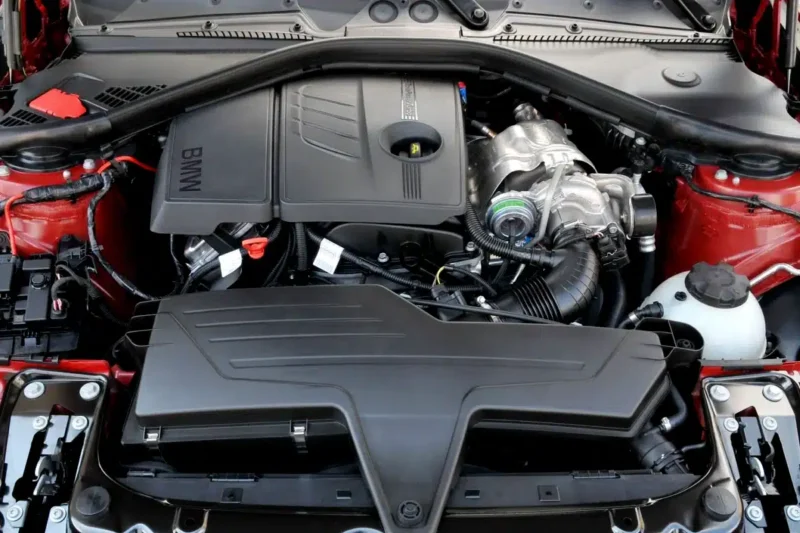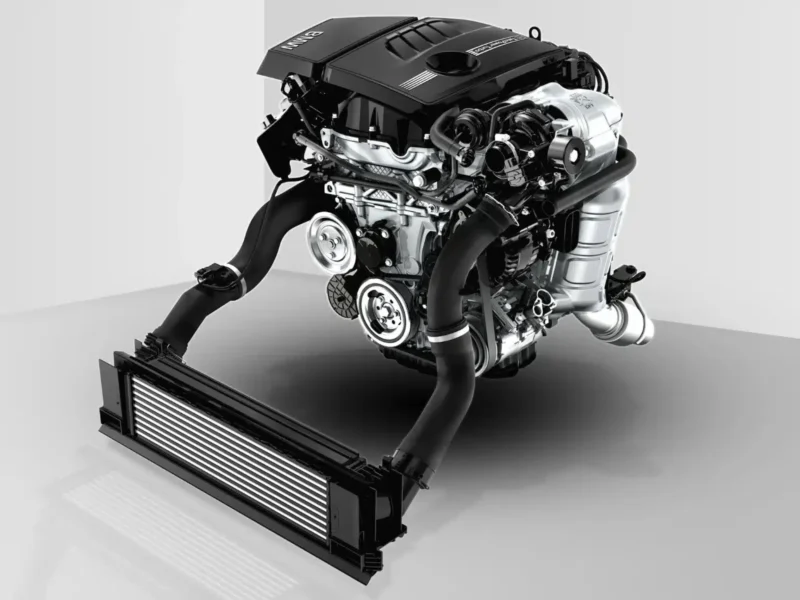The BMW N13 engine is a 1.6-liter turbocharged inline four-cylinder gasoline engine that was introduced in 2011. It premiered on the BMW 116i/118i as a replacement for the direct-injection, non-turbocharged N43 engine. The BMW N13 was produced from 2011 to 2016.
The N13 engine belongs to the Prince family of compact engines jointly developed by BMW and PSA Peugeot Citroën, which were also used in MINI cars (N12, N14 and N18). The N13 engine was introduced by the manufacturer as the next step in the Efficient Dynamics program.

The BMW N13 engine shares key technological features with the N20, including turbocharging, high-precision injection, Valvetronic and dual VANOS. The two-piece crankcase is made of die-cast aluminum. Cylinder diameter is 77mm and piston stroke is 85.8mm. The engine management system is Bosch MEVD17.2.4.
In May 2012, a new junior version of the N13 was introduced with 102 hp and 220 Nm of torque, and in 2015, its most powerful version with 177 hp and 250 Nm appeared.
BMW produced the N13 along with the larger displacement turbocharged four-cylinder N20 engine. Since summer 2016, the N13 engine has been replaced by a new series of motors – the three-cylinder B38 and the turbocharged four-cylinder B48.

In 2014, the Prince engine family, including the N13, won the International Engine of the Year award in the 1.4 to 1.8 liter category for the eighth time in a row.
Modifications
Let’s take a closer look at the N13 engine versions and the BMW models in which it was used:
N13B16K0 (102 hp and 180 Nm)
2012-2015 BMW F20 1 Series 114i
N13B16U0 (136 hp and 220 Nm)
2011-2015 BMW F20 1 Series 116i / 118i (F20 LCI)
2012-2015 BMW F30 3 Series 316i
N13B16M0 (170 hp and 250 Nm)
- 2011-2015 BMW F20 1 Series 118i
- 2012-2015 BMW F30 3 Series 320i EfficientDynamics Edition
N13B16M0 (updated version with 177 hp and 250 Nm)
2015-2016 BMW F20 LCI 1 Series 120i
N13 disadvantages and recommendations
Most of the disadvantages of N13 engines are similar to the N20 – floating revs, motor vibrations, chain stretching and timing chain tensioner failure.
Floating revs
The cause of unstable operation of revolutions is the idle valve and throttle valve contaminated with soot. The solution is preventive cleaning of the valve and throttle plate, or their replacement.
Engine vibration, fuel injectors and the fuel injectors and the fuel injector
Vibrations during engine operation are caused by dirty fuel injectors – a depleted fuel mixture enters the combustion chambers, after which the engine power decreases and there are dips when gaining speed. The solution is preventive cleaning of injectors or their replacement. In Prince family engines, the fuel pump (high-pressure fuel pump) often fails at a mileage of 60-80 tons of kilometers. The solution – replacement of the fuel pump.
Increased fuel consumption
One of the frequent causes of high fuel consumption is a faulty mass air flow sensor (MAF). Due to incorrect data coming from the DMRV to the engine ECU, the control unit gives a signal to the fuel supply system to supply an excessively enriched mixture. The solution is to replace the faulty flow meter sensor.
TIMING
The timing mechanism has its own shortcomings and is prone to breakdowns at a mileage of 80-100 thousand km. The chain and tensioner of the timing chain suffer. Valvetronic and Vanos systems can also malfunction and fail. The solution is timely oil change, diagnostics and timing repair when signs of malfunction appear (errors on the PU, extraneous sounds from under the hood).
Oil and coolant leaks
Over time, the cooling system may leak – it is necessary to change the tank (a frequent cause – cracks in the body), hoses and pipes. In addition, there is a problem with the water pump (pump), because of the failure of which the engine can overheat with all the consequences, so keep an eye on the temperature of the engine and contact the diagnostics in case of rapid heating of the motor.
Leaks may also appear from under the engine valve cover gasket. The solution is to replace the gasket or the complete valve cover.
After a mileage of 100 thousand kilometers and earlier there may be problems with ignition coils – it is necessary to change them all at once. At the same time, it is recommended to replace the spark plugs.
What oil should be used in N13?
The recommended oil for N13 engine is synthetic motor oil of BMW LL-01 specification with viscosity SAE 5W-30, 5W-40.
Chip tuning
The optimal solution to improve the performance of the N13 will be Stage 1 with an increase in power to 200 hp and 290 Nm of torque. It is also possible to re-flash the “strangled” versions of the N13 – BMW 116i to 118i.
In conclusion – is the BMW N13 engine reliable?
The N13 engine is a fairly reliable engine, it does not have serious design flaws like other BMW motors. The problems described above are not universal to all BMW N13 motors. With proper care and gentle operation, it will be a reliable engine. In turn, the N13 is very demanding of timely maintenance, quality engine oil and fuel. Do not ignore errors on the dashboard and signs of malfunction (floating revolutions, extraneous sounds during engine operation, increased oil consumption, etc.), carry out diagnostics at each maintenance and replace problematic parts before a serious breakdown occurs.
In case of observance of recommendations, qualitative and timely maintenance every 10 thousand km, the resource of N13 engine will exceed 250+ thousand kilometers of mileage without expenses for overhaul.


